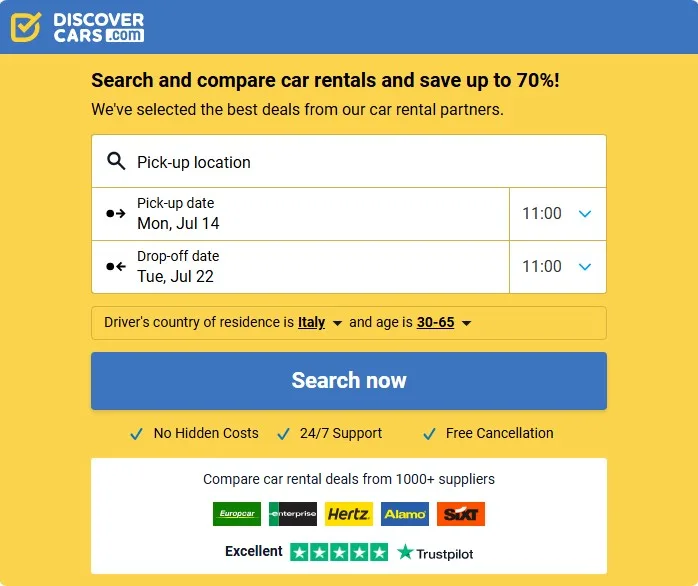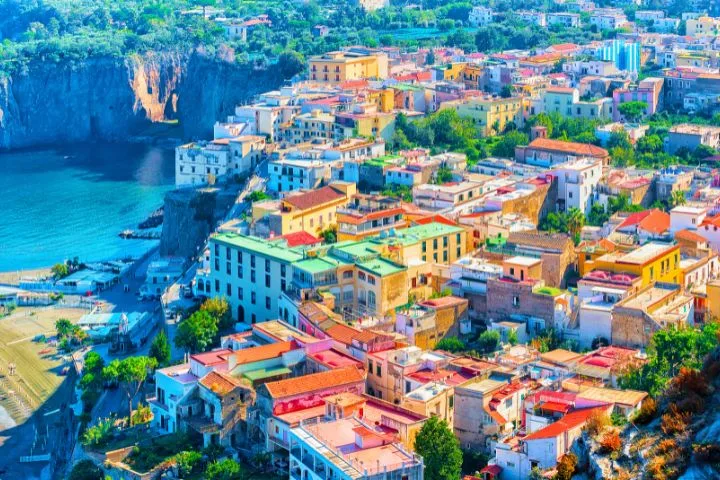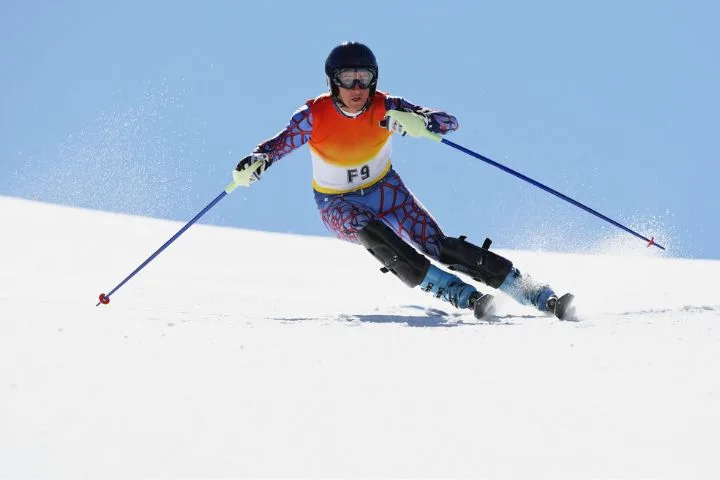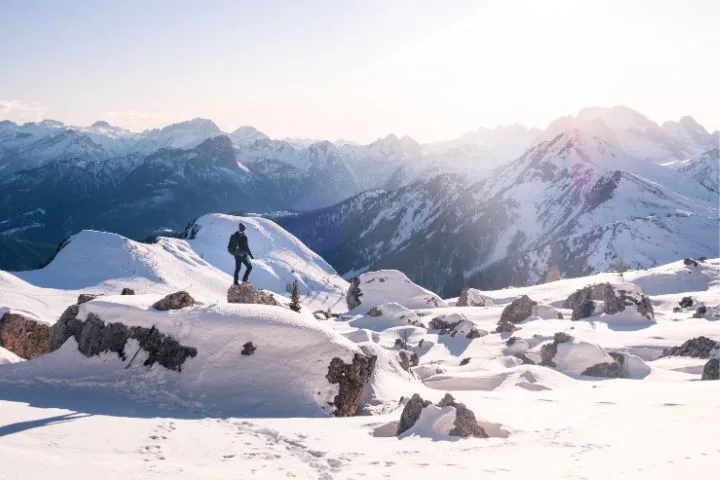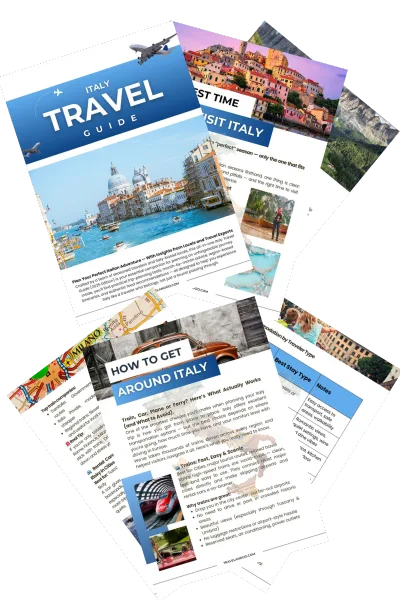Driving from Rome to Siena Through Tuscany: The Perfect Road Trip

by Abu | Last Updated December 19, 2025

Ready for what might be Italy’s most enchanting road trip? The drive from Rome to Siena is pure magic – we’re talking about 230 kilometers (143 miles) of rolling Tuscan hills, medieval hilltop towns, and world-class wine regions that’ll have you pulling over every few minutes just to soak it all in!
This isn’t just a drive; it’s a journey through the very heart of Renaissance Italy, where every turn reveals another postcard-perfect vista. Did you know that parts of this route follow ancient pilgrimage paths used by medieval travelers heading to Rome?
The first time I did this drive was back in 2010, and I remember pulling over at least six times just to take photos. My Italian friends still tease me about it, but honestly? I still do the same thing every single time. This route just never gets old.
There’s something absolutely magical about leaving behind Rome’s urban chaos and gradually watching the landscape transform into those iconic rolling Tuscan hills we all dream about.
Get ready to fall in love with Tuscany – one winding road at a time!
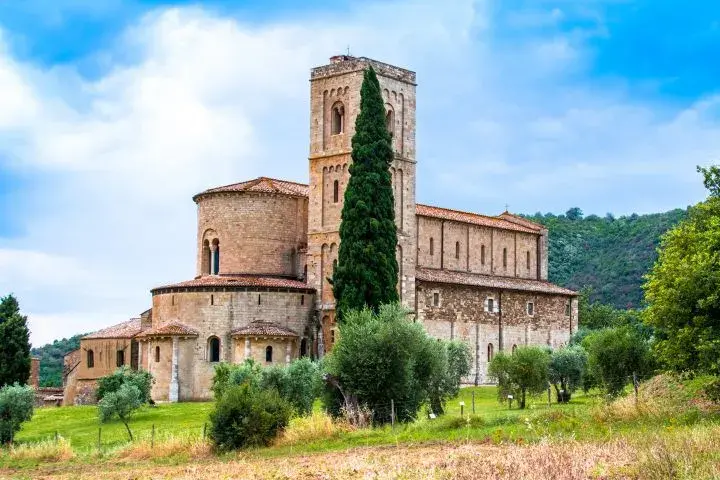
🧭 How This Rome–Siena Drive Fits Into an Italy Road Trip
The Rome–Siena route is one of Tuscany’s most rewarding scenic drives, perfect for slowing down and enjoying countryside landscapes.
- Build a Tuscany-focused scenic route → Best scenic drives in Italy
- Keep distances realistic and flexible → How to plan a perfect Italy road trip
Planning Your Rome to Siena Drive: Essential Trip Information
Let’s get straight to the numbers – you’re looking at 230 kilometers (about 143 miles) from Rome to Siena. On the highway, that’s roughly 2.5 hours of actual driving time. But here’s the thing – if you’re taking the scenic route through Chianti (which you absolutely should), plan for 3-4 hours minimum.
I learned this lesson the hard way during my second attempt at this drive. Thought I could cruise through in 2.5 hours and still make it to dinner in Siena by 7 PM. Ended up getting completely sidetracked by a tiny vineyard near Greve in Chianti and didn’t roll into Siena until nearly 10 PM. Worth every minute though!
The fuel costs are quite reasonable – expect to pay around €25-35, depending on your car. The best part? Minimal tolls! Unlike the Rome-Naples route, most of the scenic roads to Siena are toll-free, which is perfect since you’ll want that extra cash for wine tastings.
Here’s something most guides don’t mention: bring both your driver’s license and passport. Some of the smaller wine estates still check documents when you’re doing tastings, especially if you look obviously touristy.
Best Routes from Rome to Siena: Scenic vs Fast Options
The A1 highway to the Siena exit is your fastest option – boring but efficient if you’re in a rush. But honestly, why would you want to rush through some of Italy’s most gorgeous countryside?
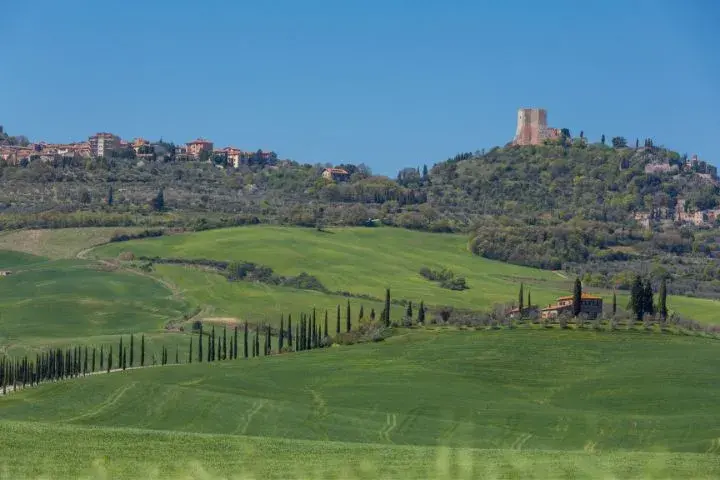
My go-to recommendation is the SR2 Via Cassia route. This ancient Roman road winds through classic Tuscan landscape and takes you right through the heart of Chianti wine country. Yeah, it’s slower, but you’ll drive past vineyards, olive groves, and those postcard-perfect cypress-lined roads that make Tuscany famous.
But here’s my secret weapon route – take the SR146 through Chianti Classico if you’re traveling between March and October. This route goes directly through Greve in Chianti and Castellina, and the scenery is absolutely breathtaking. Just be prepared for narrow, winding roads and the occasional slow-moving tractor. That’s all part of the charm, though.
Pro tip: Download offline maps for the entire area. GPS reception gets spotty in some hill towns, and you don’t want to miss that perfect photo opportunity because you’re staring at your phone trying to get directions.
🛣️ Scenic Routes Starting from Rome
Choosing the scenic option reveals Tuscany’s hills, wine towns, and quieter backroads.
- Countryside alternative toward Florence → Driving from Rome to Florence with must-see stops
- Western Tuscany option with coastal access → The most scenic drive from Rome to Pisa
- Longer northbound journey through Italy’s heart → Driving Milan to Rome through iconic regions
Must-See Stops Along the Rome to Siena Drive
Okay, this is where things get really exciting. Viterbo is your first major stop – this medieval town has one of the best-preserved papal quarters in Italy. The Palazzo dei Papi is absolutely stunning, and there’s this little café called “Bar del Corso” where they make the most incredible cornetti I’ve ever tasted.
Orvieto is absolutely unmissable. That cathedral facade is one of the most beautiful examples of Italian Gothic architecture you’ll ever see. Plus, the underground caves tour is fascinating – they’ve been carving tunnels under this town for over 2,500 years. Just be warned, parking can be tricky. Use the funicular from the lower town.
Here’s where wine lovers get excited – Montalcino. There’s this tiny enoteca called “Caffe Fiaschetteria Italiana” right in the main square where they’ll let you taste before buying. The owner, Franco, knows more about Brunello than most sommeliers.
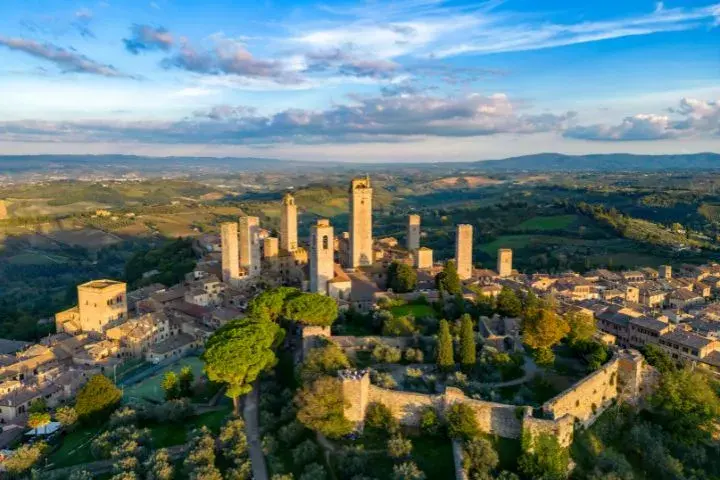
San Gimignano requires a slight detour, but those medieval towers are absolutely iconic. Fair warning, though – it gets absolutely packed with tour buses during peak season. Try to arrive early in the morning or late afternoon for the best experience and fewer crowds.
🏛️ Tuscan Countryside & Hill town Drives
This route shines when you stop often and explore Tuscany’s smaller towns.
- Vineyards, medieval villages, and rolling hills → Tuscany scenic drives
- Quiet northern wine-country backroads → Hidden scenic routes in Piedmont
Driving Through Chianti Wine Country: What to Expect
Let me give you the real talk about driving in Chianti – these roads were definitely not designed for modern cars. They’re narrow, winding, and sometimes you’ll meet a delivery truck coming the other way on what feels like a single-lane road. Don’t panic, just pull over when you can and let them pass. Italian drivers are surprisingly patient in wine country.
The scenery, though? Absolutely worth every anxious moment. Rolling hills covered in perfectly manicured vineyards, stone farmhouses that look like they haven’t changed in 500 years, and those famous cypress trees standing sentinel along ridge lines. I still get goosebumps every time.
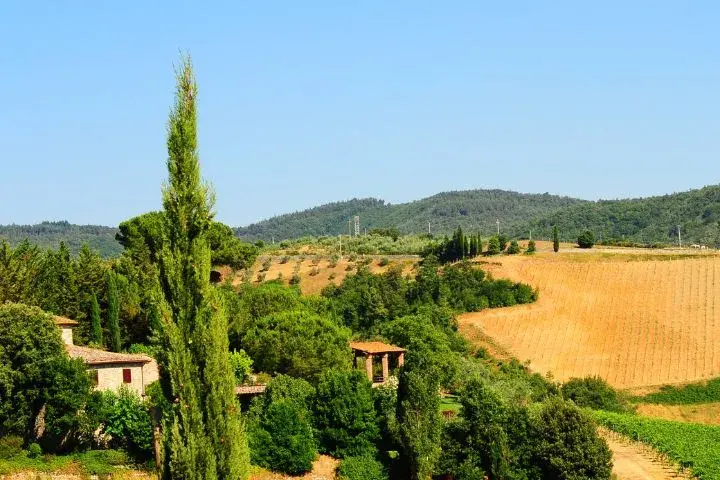
If you’re traveling during harvest season (late September to early October), the entire region comes alive. You’ll see workers in the vineyards, and smell the fermentation happening at the wineries. Just book your accommodations well in advance – it’s peak season for good reason.
Most wineries require appointments for tastings, especially the more famous ones. Don’t just show up expecting to taste – call ahead or book online.
🍷 Chianti & Central Italy Scenic Drives
Chianti is best enjoyed as part of a wider network of scenic Tuscan routes.
- Rolling hills and classic wine roads → Tuscany scenic drives through Chianti and beyond
- Florence-bound countryside alternative → Driving from Rome to Florence with must-see stops
- Big-picture inspiration for longer loops → Italy driving holiday ideas
Arriving in Siena: Parking and ZTL Navigation
Siena’s historic center is completely off-limits to cars unless you have special permits – those ZTL cameras don’t mess around. I’ve got the €200 fine to prove it from my early days when I thought I could sneak through quickly.
Your best bet is parking at “Il Campo” or “Santa Caterina” – both are well-marked lots just outside the historic walls. Santa Caterina is slightly cheaper at about €1.50 per hour, and there’s a decent shuttle service that runs every 15 minutes to the city center.
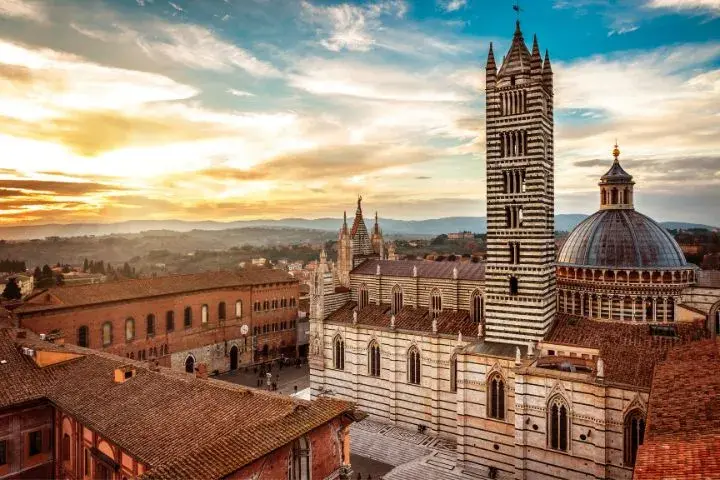
If you’re staying overnight in Siena, definitely ask your hotel about parking arrangements when booking. Many places have agreements with specific parking areas or can arrange temporary permits for loading luggage. The Hotel Palazzo Ravizza, for example, has valet service that’ll take your car to secure parking – totally worth the extra cost.
Walking from the main parking areas to Piazza del Campo takes about 10-15 minutes through some seriously charming medieval streets. Honestly, it’s part of the experience. Just wear comfortable shoes because those stone streets can be slippery, especially if it’s been raining.
Plan Your Trip with Our Favorite Booking Tools
Alternative Routes and Scenic Detours Worth Taking
If you’ve got extra time and want to see some of Tuscany’s most spectacular landscapes, consider the Val d’Orcia route. This UNESCO World Heritage landscape is absolutely stunning – we’re talking about those classic Tuscan photos with rolling hills, isolated farmhouses, and cypress groves that look painted onto the landscape.
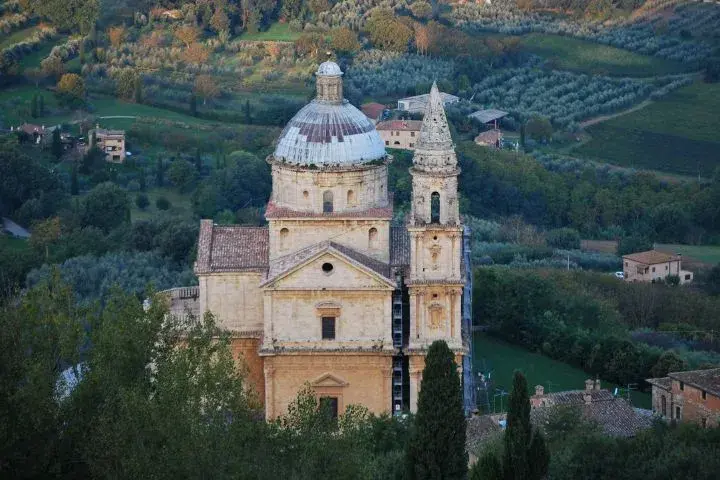
Montepulciano is worth every minute of the detour. This hilltop town produces some incredible Vino Nobile wines, and the views from the city walls are absolutely breathtaking. There’s this little osteria called “Acquacheta” where they serve the most incredible bistecca alla fiorentina I’ve ever had.
Here’s my secret gem – Bagno Vignoni. This tiny village is built around natural thermal springs that have been used since Roman times. The main square is actually a giant thermal pool, and you can soak in the public baths for just a few euros. It’s surreal and incredibly relaxing after hours of driving.
The Abbey of Sant’Antimo near Montalcino is another hidden treasure. This Romanesque monastery sits in an isolated valley, and if you time it right for evening vespers, the Gregorian chanting echoing through those ancient stone walls is absolutely magical.
🌄 Continue Beyond Siena by Car
Siena is a great base for extending your Tuscan road trip in multiple directions.
- Florence-to-coast scenic option → Cinque Terre scenic drive
- Elegant coastal towns and cliffside roads → Italian Riviera scenic drive
- Northern Italy lakes and mountains → Best scenic drives in Northern Italy
Making Your Tuscan Dream Drive a Reality
Look, I’ve probably done variations of this drive so many times now, and it still gives me that same sense of wonder every single time. There’s something about the combination of incredible scenery, world-class wine, medieval architecture, and that unmistakable Tuscan pace of life that just hits differently than anywhere else in the world.
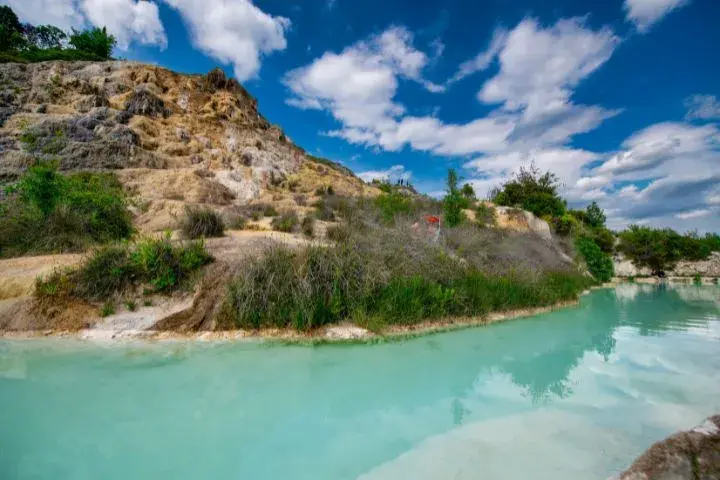
My biggest piece of advice? Don’t overplan it. Sure, make dinner reservations in Siena and maybe book a wine tasting or two, but leave plenty of room for spontaneous discoveries. Some of my best memories from this route occurred when I got completely lost and stumbled upon a tiny family-owned vineyard or a medieval festival that wasn’t listed in any guidebook.
And here’s something I wish someone had told me on my first trip – bring a good cooler bag. You’re going to want to buy wine, olive oil, pecorino cheese, and probably a dozen other local specialties along the way. Trust me, your friends back home will thank you.
Buon viaggio, and prepare to fall in love with one of Italy’s most magical regions!
🏁 Build a Scenic Tuscany-First Italy Route
Use the Rome–Siena drive as the heart of a slower, countryside-focused Italy road trip.
- Choose your next scenic extension → Best scenic drives in Italy
- Balance scenery with timing and logistics → How to plan an Italy road trip
FAQs on Drive from Rome to Siena
How long does it take to drive from Rome to Siena?
The drive from Rome to Siena covers 230 kilometers (143 miles) and takes anywhere from 2.5 to 4 hours, depending on your route. If you take the fastest A1 highway route, you’re looking at about 2.5 hours in good traffic.
But honestly, why rush? The scenic SR2 Via Cassia route through the Tuscan countryside takes about 3-4 hours and is absolutely worth the extra time.
I always tell people to plan for at least 4 hours if you’re taking the Chianti wine route – you’ll want to stop for photos, wine tastings, and those spontaneous gelato breaks that make Italian road trips so special.
What’s the most scenic route from Rome to Siena?
Hands down, take the SR2 Via Cassia or the SR146 through Chianti wine country for the most breathtaking scenery. The SR2 follows an ancient Roman road through classic Tuscan landscapes with rolling hills, olive groves, and cypress trees.
The SR146 Chianti route is my personal favorite – it winds through world-famous wine regions like Greve in Chianti and Castellina with postcard-perfect vineyard views.
Yes, these routes have narrow, winding roads and take longer than the highway, but you’ll drive through those iconic Tuscan landscapes that look like Renaissance paintings come to life.
Are there tolls on the Rome to Siena drive?
Great news – there are minimal tolls on most routes from Rome to Siena! The scenic SR2 Via Cassia and Chianti wine routes are completely toll-free, which is perfect since you’ll want that extra cash for wine tastings and local specialties.
If you take the fastest A1 highway route, expect to pay only about €8-12 in tolls total. This makes the Rome to Siena drive much more budget-friendly than other Italian highway routes.
Combined with fuel costs of around €25-35, it’s incredibly affordable compared to train tickets, especially if you’re traveling with others.
What are the best stops to make between Rome and Siena?
Don’t miss Orvieto – that Gothic cathedral is absolutely stunning, and the underground cave tours are fascinating. Montalcino is essential for wine lovers; try authentic Brunello di Montalcino right at the source.
If you’re taking the Chianti route, Greve in Chianti has this amazing triangular wine square where you can taste local vintages. For a slight detour, San Gimignano‘s medieval towers are iconic (just arrive early to avoid tour bus crowds).
My secret gem is Bagno Vignoni – a tiny village built around thermal springs where you can soak in Roman-era baths. Each stop offers something unique, from wine tastings to medieval architecture to natural hot springs.
Where should I park in Siena, and how do I avoid ZTL fines?
Siena’s historic center is completely off-limits to cars due to ZTL (Limited Traffic Zone) restrictions – those cameras will automatically fine you around €200 if you drive through without permits.
Your best parking options are “Santa Caterina” (about €1.50/hour, cheapest) or “Il Campo” parking areas just outside the historic walls. Both have shuttle services running every 15 minutes to the city center.
If you’re staying overnight, always ask your hotel about parking arrangements when booking – many have agreements with specific lots or can arrange temporary permits for luggage drop-off.
Walking from these parking areas to Piazza del Campo takes only 10-15 minutes through charming medieval streets.
Recommended Tours & Activities in Siena
💬 We’d love to hear from you!
Have questions, tips, or personal travel stories to share? Drop them in the comments below — your insights help fellow travelers plan their adventures too.

